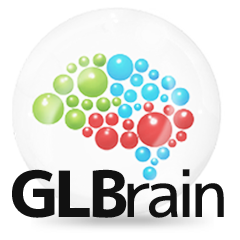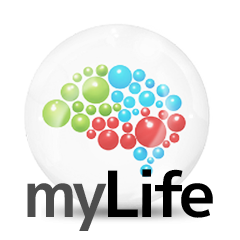In the evolving landscape of digital healthcare, the need to streamline administrative tasks without compromising patient care has never been more critical. Physicians are expected to manage overwhelming amounts of documentation, often spending more time typing than treating. To combat this challenge, providers are increasingly turning to medical scribe services to offload clinical documentation and focus more on quality patient interactions. Supporting this shift are advanced solutions like virtual medical scribe tools that seamlessly integrate with practice workflows and provide real-time charting support.
This transformation marks a turning point in healthcare delivery—where precision meets productivity, and physicians are finally able to reclaim control over their schedules.
Understanding Medical Scribe Services
Medical scribe services are designed to assist healthcare providers with real-time documentation during patient visits. Whether in-person or virtual, scribes record physician-patient encounters into the EHR (Electronic Health Record), ensuring that all medical details are accurately transcribed and formatted.
Traditionally, scribes worked in the exam room. But with the evolution of technology and remote capabilities, virtual scribes now offer the same services through secure platforms, listening to appointments and updating records without being physically present. This shift has made scribe services more accessible, affordable, and efficient.
Why Documentation is a Growing Burden for Providers
Clinicians are burdened with increasing regulatory demands, billing requirements, and patient volume. The average physician spends nearly two hours on EHRs for every hour of clinical care. This imbalance has led to burnout, reduced job satisfaction, and a negative impact on patient care.
Medical scribe services offer a powerful antidote. With a trained scribe managing EHR input, providers can:
.Spend more time face-to-face with patients
.Reduce after-hours charting and fatigue
.Improve clinical accuracy and compliance
.Boost productivity and patient satisfaction
The outcome? A healthcare experience that benefits patients and providers alike
How Medical Scribe Services Work
A virtual scribe joins the appointment via audio or video, listens to the encounter, and updates the EHR in real time. This includes:
.Documenting HPI (History of Present Illness), ROS (Review of Systems), PE (Physical Exam), and assessment plans
.Following customized templates based on the provider’s style
.Ensuring compliance with legal and billing standards
.Delivering finalized notes for provider review and sign-off
This integration enables clinicians to end their day with charts completed and fewer pending tasks.
Benefits of Medical Scribe Services
1. Enhanced Provider Efficiency
By eliminating the need to type during visits, providers can see more patients and increase revenue.
2. Higher Patient Satisfaction
Patients enjoy more eye contact, conversation, and attention when providers aren't focused on a screen.
3. Fewer Errors and Omissions
Professional scribes reduce the risk of inaccurate records, which protects practices against liability and audit issues.
4. Work-Life Balance for Clinicians
Physicians regain control over their time and reduce after-hours documentation, minimizing burnout.
Who Should Use Medical Scribe Services?
These services are beneficial across all healthcare sectors. Specialties that frequently benefit include:
.Primary Care: Fast-paced environments with high documentation loads
.Emergency Medicine: Need for rapid, accurate records in high-stress settings
.Cardiology & Surgery: Detailed procedures that require precise notation
.Psychiatry & Mental Health: Empathy-driven care where note-taking can be disruptive
Regardless of specialty, any provider overwhelmed with EHR documentation can benefit from medical scribes.
Key Features of High-Quality Scribe Services
To get the most from your scribe partnership, ensure the provider offers:
.HIPAA-compliant technology and workflow
.Experienced and trained scribe professionals
.Integration with your EHR system
.Customizable templates and documentation styles
.Real-time support and scalability options
Overcoming Common Concerns
Despite the clear advantages, some practices hesitate to adopt scribe services due to privacy concerns or workflow disruptions. However, virtual scribes undergo extensive training in confidentiality protocols and are bound by HIPAA regulations. Additionally, onboarding is typically streamlined to ensure smooth implementation with minimal disruption.
How to Implement Medical Scribe Services in Your Practice
.Assess Your Needs: Identify documentation pain points, provider workloads, and specialty-specific requirements.
.Choose the Right Provider: Look for vendors with proven healthcare experience and positive reviews.
.Start with a Pilot: Try scribe support with one or two providers to evaluate its effectiveness.
.Customize Your Experience: Tailor templates, note styles, and workflows to your clinic's preferences.
.Review and Optimize: Collect feedback regularly and adjust services accordingly.
The Future of Scribing in Healthcare
As AI, voice recognition, and automation continue to evolve, medical scribes are increasingly blending traditional documentation with smart technology. The next generation of scribe services may include:
.Hybrid models that combine human scribes with AI editing
.Predictive charting based on visit type
.Multi-language support
.Smart alerts for clinical and billing compliance
Still, human oversight remains essential for clinical nuance, empathy, and accuracy.
Final Thoughts
In a system burdened by inefficiencies, medical scribe services offer a lifeline. By reducing the administrative weight carried by clinicians, they restore the doctor-patient relationship to the center of care. Whether in a solo practice or a multi-specialty group, integrating a scribe into your workflow can improve outcomes, reduce burnout, and streamline operations.
If you're ready to transform your practice, investing in professional scribe services could be one of the smartest clinical decisions you make.
FAQs About Medical Scribe Services
Q1: Are virtual medical scribes secure?
Yes, reputable scribe providers are HIPAA-compliant and follow strict privacy protocols. Virtual medical scribes operate through encrypted, secure platforms.
Q2: Can scribes work with any EHR system?
Most professional scribes are trained in multiple EHR platforms including Epic, Cerner, Athenahealth, and more.
Q3: How long does it take to onboard a scribe?
Implementation typically takes 1–2 weeks. This includes assessing provider preferences, setting up workflows, and training the scribe.
Q4: Will having a scribe slow down my appointments?
Not at all. In fact, most providers report shorter patient visits and quicker chart closures.
Q5: What’s the cost of using a medical scribe?
Costs vary by provider and service model (full-time vs. part-time), but most find the ROI worthwhile due to increased patient throughput and billing accuracy.
Q6: Is a medical scribe the same as a transcriptionist?
No. Transcriptionists type dictated notes after the visit, whereas scribes document in real time, often directly into the EHR.




Share the News